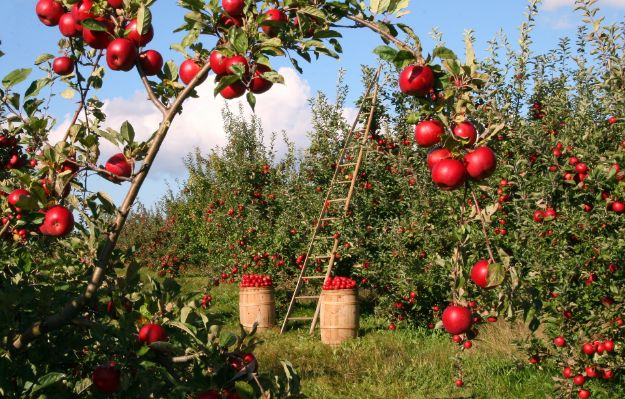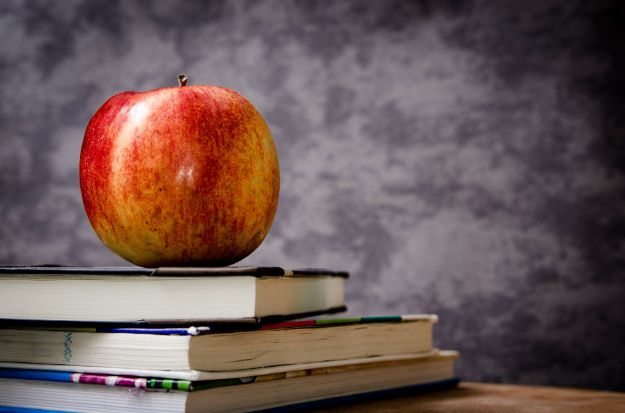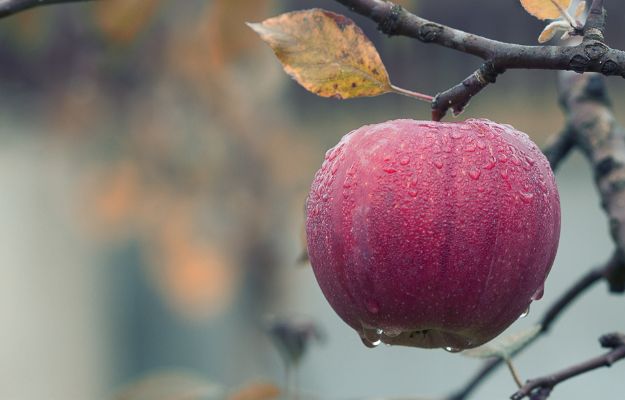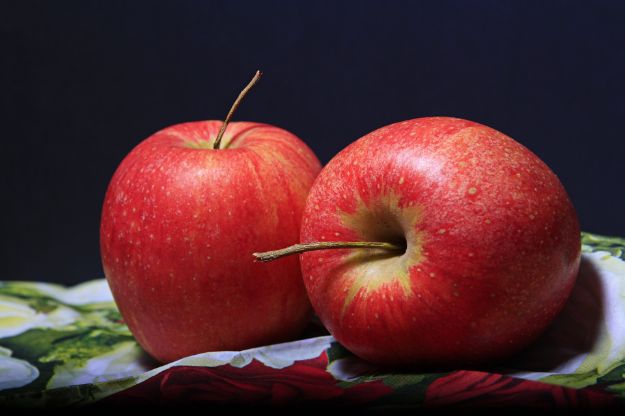Wondering what Apple Varieties you should pick up next time you go to the farmers market? Can't decide which heirloom apples to grow? This Apple Varieties Guide will show you 16 Heirloom Apples, where to grow them, how they taste, and how to serve them!
Apple Varieties | 16 Heirloom Apples & What They Taste Like
We've had the farm for years now and I'm still going back and forth on deciding which heirloom apple to grow. It may sound surprising but I just can't seem to make up my mind. In case you didn't know, there are a lot of varieties of apple out there and deciding to grow which one isn't as simple as you think. You have to consider your location, the flavor you prefer and why you would want to grow it. So if you need some help deciding, get it here! I'm sure you'll be ready to start planting in no time.
Thanks to Hobby Farms for this infographic! Illustrations by Tom Kimball.
Best Apple Varieties | 16 Heirloom Apples For Your Farm
Whether you're growing them for the farm, or just want to pick the next best thing while you're at the local farmer's market, you'll love these options!
I. Eastern United States

Ashmead's Kernel – Grow Something Out Of The Ordinary
At first glance, Ashmead's Kernel looks dull and uncompromising, but this old-timer from England has survived because its crisp, yellow flesh offers a distinctive crunch and aromatic, pear-like flavor. Just picked, its flavor can be too assertive, so allow it to sweeten up and become juicier after the September to October harvest. Ashmead's works well in a cider blend, and it keeps well.
Rhode Island Greening – Great For Cooking
Dating back to the 1600s, Rhode Island Greening has been a stalwart favorite with home bakers for generations because it maintains its shape and complex flavor in pies. Apples harvested early are best for baking; for eating fresh, harvest aft3er the midpoint of their season, around late October, when the flavor mellows.

Northern Spy – Sweet & Tart – Eat it Fresh!
Northern Spy is a venerable New Yorker that has a tart flavor with hints of sweetness, once making it the third-most popular apple in the U.S. It's worth rediscovering, both for snacking and to use in the kitchen. Look for them later in the season, starting in October. They keep well, so there's no rush to consume them.
Macoun – Mild Flavor – Tastes Great Fresh!
If you like McIntosh apples, the Macoun (pronounced Makowan) is a good heirloom variety for you. It is juicy, sweet and aromatic, making it a healthy dessert alternative. The flavor isn't as good if harvested early or late in the season, so aim for a harvest between September and October.
II. Midwest United States

Knobbed Russet – Out of the Ordinary
One of the oddest apples you'll see (or bite into) is the toad-like Knobbed Russet, with what appears to be warts on its skin. The apple, which ripens in October, has a somewhat earthy flavor reminiscent of a potato. Not surprisingly, this English variety is a rarity in U.S. orchards, but some growers prize it as a relic from an age when an apple's appearance mattered far less than its substance. Many old favorites share this apple's corky russeting.
Rome Beauty – Great For Cooking
Rome Beauty has a somewhat thick skin, but that doesn't get in the way of its talents when baking. Rome's value in the kitchen explains its popularity across the country; it is widely grown outside the U.S., as well. This queen of the baking apples has creamy-yellow flesh and a tart flavor. An offshoot variety, Red Rome, boasts a cheerier complexion. Romes can be found farther south than many varieties because the trees aren't as dependent on chilly winters to perform.
Paula Red – Sweet & Tart – Eat it Fresh!
While the first apples to ripen in the season tend to be a tad bland, Paula Red is an invigorating exception. Its tart flavor might remind you of the better-known McIntosh, from which Paula is thought to have descended. The white flesh also makes a good sauce, though it turns mushy if baked in a pie. Start harvesting Paula Reds in August. Depending on your region, the harvest may run into October. This apple stretches the concept of “heirloom,” having been discovered by a Michigan farmer in the 1960s; as of 2012, the original tree is still growing.
Grimes Golden – Mild Flavor – Eat it Fresh!
Grimes Golden is thought to be the ancestor of Golden Delicious. The two look similar, but Grimes has a spicier flavor and remains less well-known, mainly because it requires more care when shipped. Take a bite, and see if you can detect a hint of coriander. Should you have more than you can eat fresh, try Grimes Golden in sauces and pieces. Harvest when ripe, between late September and October.
III. West United States

Hidden Rose – Grow Something Out Of The Ordinary
Hidden Rose tastes like cotton candy to some and like strawberry lemonade to others. More striking, however, is the rosy flesh that lies beneath its yellow skin. This remarkable apple was discovered growing in Oregon in the 1960s, and its production is limited outside of that state. If you can find or grow it, serve the pink slices with cheese or cook the apples down into a beautiful sauce.
Melrose – To Cook With
Melrose may be the state apple of Ohio, bu tit grows well in the North-west, too. It's a firm apple with coarse flesh suited to baking, but give it a month or two after harvest near the end of October, and it'll sweeten up and become more aromatic for eating fresh. Sample one and see if you detect a taste of the variety's famous presents, Jonathan and red Delicious – particularly the latter.
Gravenstein – Sweet & Tart – Eat Fresh
Gravenstein is a California favorite, taking to the climate and offering a distinctive sweet-tart flavor and crisp, juicy texture that's just as popular for processing into sauce or cider as it is for eating fresh. Sadly, this apple is getting harder to find because the short stems and broad ripening range make it a challenge to harvest and its quick oxidation makes it difficult to handle. The Gravenstein is listed on the Slow Food Ark of Taste. Keep an eye out for it in a cider, which is highly regarded for its special character.

Yellow Transparent – Mild – Eat it Fresh!
Yellow Transparent is one to look for as early as June for a sweet prelude to the fall harvest. Depending on your region, this medium to large apple might be available into August. Although it is a mild-mannered, the subtle lime and vanilla notes can be complex, making it excellent in sauce.
IV. Southern United States

Yates – Grow Something Out Of The Ordinary
The small, red Yates apple is an old George variety, not much larger than you'd expect of a crab apple. The flesh is intense and aromatic, and the trees often are grown for cider production, but they can also be used to produce fruit for wildlife because the apples can remain on the branches without spoiling until year's end. The trees are vigorous growers and disease-resistant.
Lodi's – Great For Cooking
Lodi's sharp flavor serves well in the kitchen, cooking down quickly into an excellent sauce. It can be used for pies if you prefer the slices to be soft rather than maintaining their shape. Harvest ranges from late July into August. Use apples promptly because the flavor and texture will deteriorate over time. The trees are vigorous and spreading; while they are generous producers, they may bear only every other year.

Arkansas Black – Sweet & Tart – Eat Fresh!
Arkansas Black was once more widely grown in that state, but its popularity has since spread throughout the South. Eaten fresh, the rounded apple is tart and crisp, its golden flesh mellowing with storage – and it keeps well. While “black” may exaggerate its color, it does ripen to an intensely dark purplish red. The harvest is late, usually in October, on trees with a moderate growth habit. Arkansas Black is also a good choice for your favorite recipes.
Mollies Delicious – Mild Flavor – Eat Fresh!
For a mild, late-summer apple, try Mollie's Delicious. The flesh is juicy, crisp and sweet, and it maintains its quality for weeks if kept in the refrigerator. It's an attractive apple, brightly colored with a distinctive conical shape. Trees are productive and good pollinizers of neighboring varieties. It can do well in the South because of its heat and humidity tolerance.
So which one will you plant? Was it what you had in mind? Let us know below in the comments! 🙂
Want more homesteading tricks, tips, and tidbits. Subscribe to our Newsletter! You’ll also be given access to exclusive offers on the latest homesteading essentials.
Need some ideas on what to do with your apples once they're ready for the picking? Get some here:


When shopping for my apple trees I had wished for a better description of taste and this is a great help. The only thing missing is the growing zones for each variety.
Lynda
Eat an Ambrosia apple and you won’t want anything else. Cameo is not bad either.
I am thinking of Mollie’s Delicious since we have such hot summers in Texas, even in zone 8a.
In PA I grew up with one referred to as a July Apple. I’m sure that was the familiar local name. Any idea as to the actual name ???
Growing up in Virginia, my great aunt had a apple tree by her house that was yellow and when you bite into it the center was almost transparent and very juicy. I’v never known its name but my grandpa just called it a clearwater center apple.
Any ideas what it could be?
They don’t mention Winesaps, a favorite of mine.